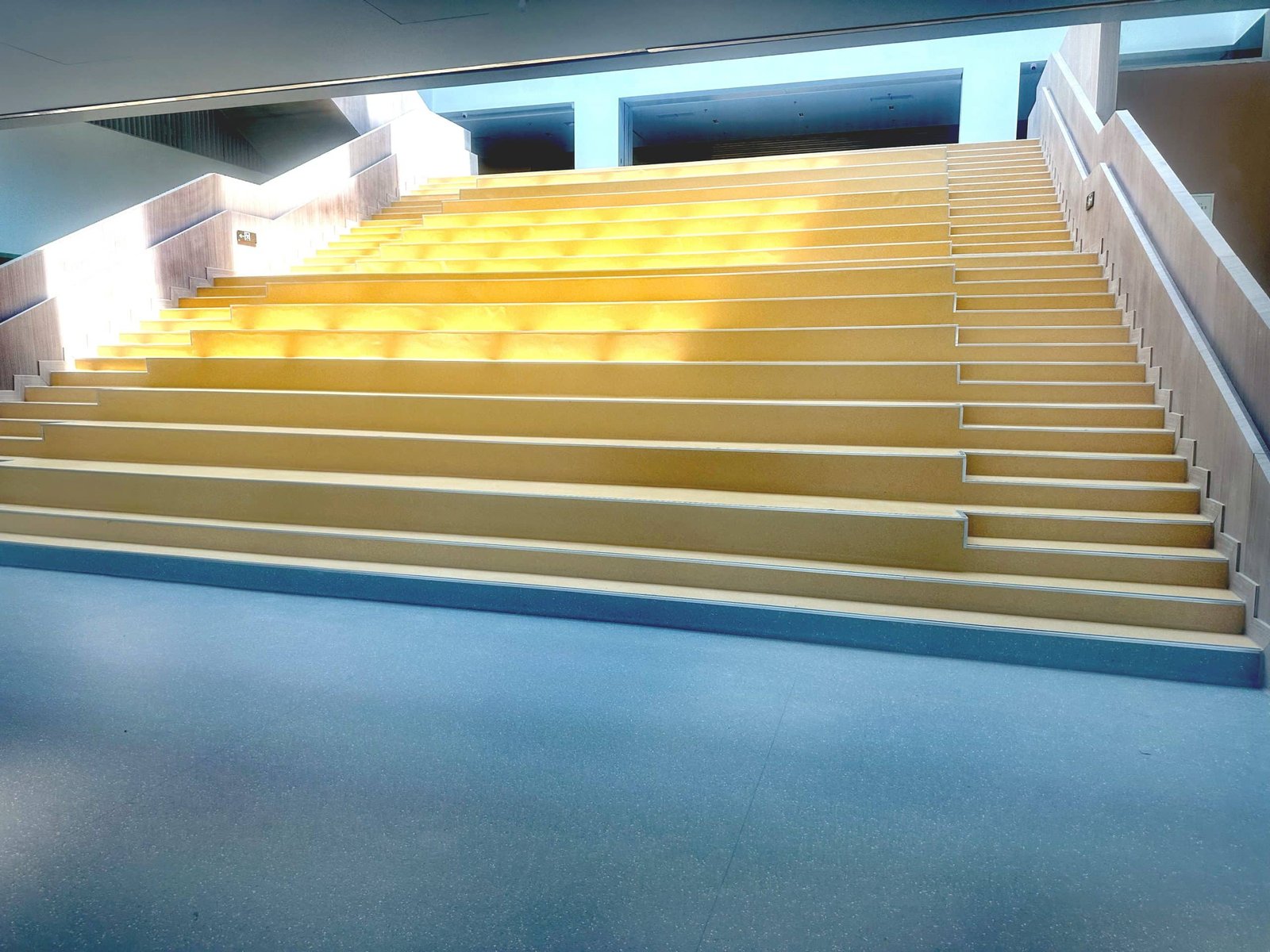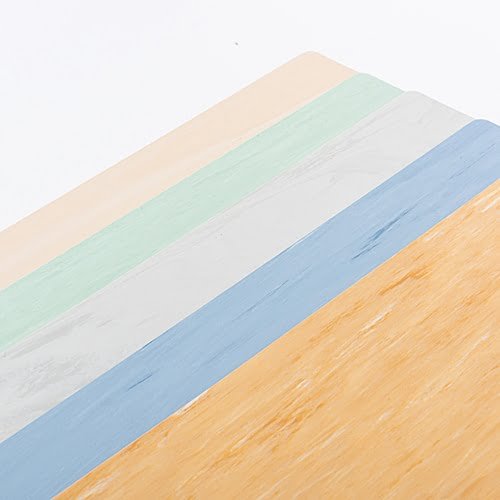Construction of film vinyl flooring
content
Vinyl Flooring Construction Instructions
Step 1: Prepare Vinyl Flooring Materials and Construction Materials
Step 2: Prepare the flooring surface
Step 3: Install Vinyl Flooring
Self Adhesive Self Adhesive Vinyl Floor Construction:
To build vinyl flooring in glued rolls:
Lockable Vinyl Flooring Construction
Welding with professional welding equipment (applied when rolling vinyl flooring)
Completion and Handover
Important considerations after installing vinyl flooring:
Vinyl flooring construction experience
Select a starting point to glue floors at corners and edges
Arrange wood grain flooring along the level of the room
Hire a team of construction workers to ensure construction quality and floor finishing
Vinyl flooring construction is an important step in helping you achieve a high-quality, flawless floor surface. The construction process of plastic flooring is also very simple, but it is necessary to understand the steps and standards of plastic flooring construction. This step greatly affects the usability and long-term aesthetics of future floor surfaces.
So do you know how to install vinyl flooring? If not, read this article, here U2U will guide you how to install vinyl flooring yourself very easily in 4 steps. Make sure that after reading this article, you will be able to create a standard, high-quality, and beautiful floor for yourself.
Vinyl Flooring Construction
Vinyl Flooring Construction Instructions
To install vinyl flooring, you will need to complete the following steps:
Step 1: Prepare Vinyl Floor Materials and Construction Materials
Tools for Making Vinyl Floors
Tools for Building Vinyl Floors
Construction first needs to prepare materials, construction materials, and construction machines. They include:
previously selected vinyl flooring
Special PVC floor glue
Groove welding machine, professional welding equipment
wooden hammer
Drum weight 50kg
Dedicated floor shears or scissors
Step 2: Prepare the floor surface
This is an important step that affects both the construction process and the quality of the finished vinyl floor surface. The old floor surface will be where the glue is attached directly to the vinyl floor. Therefore, they need to conform to the standard.
Here are the steps to prepare the floor surface before installing vinyl flooring:
Floor surfaces must be finished last after other projects are completed to avoid spills of dust, lime mortar, or other materials affecting the quality of the vinyl floor finish.
The standard ground for vinyl flooring construction, if it is concrete, must be flat and solid, with no rough or defective surfaces. If it is uneven or has bulges, use self-leveling mortar to level the surface of the floor again, and the thickness of the floor will reach 2-3mm.
The standard ground for vinyl flooring construction, if it is concrete, must be flat and solid, with no rough or defective surfaces.
If it is a tile floor or an old stone floor, it is necessary to check whether the surface of each tile is smooth, and whether the joints between bricks and bricks are smooth? Otherwise, it is necessary to smooth the brick pattern or fix the ground with self-leveling mortar.
If it is a wooden floor, make sure that the surface of the floor is firm, straight, not warped, shrinking, or raised.
The humidity of the vinyl concrete floor must be lower than 25%, and the room temperature must be in the range of 10-25 degrees Celsius, and it must remain unchanged for 48 hours before construction.
If in the case of replacing old vinyl or vinyl flooring, the old floor layer needs to be removed, clean the underlying glue and make sure it is clean and level.
Floor surfaces must be cleaned and sanitized, then allowed to dry.
Step 3: Install Vinyl Flooring
The next step is to glue the vinyl flooring to the prepared surface.
For each different type of vinyl flooring, there are different construction methods, so the construction method also needs to be based on the type of vinyl flooring you choose for your project.
Self Adhesive Self Adhesive Vinyl Flooring Construction:
Self Adhesive Vinyl Plank Flooring
First you need to check again whether the old floor surface is satisfactory? If the floor surface is satisfactory, proceed to the gluing step.
For vinyl floors using ready-made glue, construction is very simple. Just peel off the decal layer on the surface of the floor plinth and stick it on the prepared floor, you can do it yourself. However,U2U recommends that you use more glue, so that the surface of the decorated plastic floor will be more stable and firm to avoid shaking.
The glue used is special floor glue. You continue to stir the glue and spread it evenly on the floor surface. After applying the glue evenly on the floor surface, wait about 40 minutes for the glue to adhere.
After about 40 minutes, the glue starts to set and you can move on to installing the plastic floor. Choose the first point to install, snap the panels together, then tap the edges with a plastic hammer to bond the 2 floor panels, continuing until the end of the floor surface. After the floor mat is installed on the wall, use a knife or special scissors to cut out the size of the floor so that the floor mat covers the wall by 2-3 cm.
When finished, use a specialized floor cutter to remove the floor edge at the bottom of the wall. Hit the floor 1 circle with a plastic hammer. After about 1 hour, roll back and forth with a roller of about 450 kg to ensure that the floor is flat.
To build vinyl flooring in glued rolls:
– The ground used for gluing vinyl floors must be flat and joints and unevenness must be leveled with 2-3mm thick self-leveling mortar.
Construction of film vinyl flooring
Suppose we are constructing on the surface of an old flooring:
+ If it is a brick, the tiles need to be firmly attached, and the joints between the stones should be smooth.
+ If it is a wooden floor, the floor must be hard and free of cracks.
+ If it is a cement floor, the moisture content must be less than 5%, and keep it for 48 hours before paving.
Paste the floor:
First, you choose the first place to glue the floor, then proceed to glue the vinyl floor. Mix the glue (the electrostatic floor must be a special electrostatic glue) thoroughly for about 10 minutes, apply it evenly on the floor in batches, about 2-4m2, and apply the glue sheet on both sides of the electrostatic copper wire along the length direction.
Apply glue to floor surface
Install roll-on vinyl flooring within 1 hour of applying adhesive. Lay a vinyl sheet on the floor of the installation location, roll the sheet up to half its width, and apply glue evenly over the location of this size. Gradually spread the vinyl sheet over the floor from the center of the sheet to the edges to force the air out. Continue these steps with the other half of the vinyl sheet.
After applying the glue for about 40 minutes, use a 50kg roller to roll evenly on the entire floor. For large areas that a roller cannot reach, a hand roller can be used. Then, you wipe down the entire vinyl floor with a clean rag.
When welding, use 3mm – 4mm welding wire with a welding angle of 40°. After soldering, use a sharp knife to press down on the floor to remove excess solder.
After assembling and gluing the vinyl floor, use a rubber mallet to lightly tap the edges and floor surface 1 turn. After about 1 hour, roll on the floor surface with a 50 kg roller. The purpose is to make the surface of the plastic floor flat, wrinkle-free, prevent foaming and have higher adhesion.
Finally, for the floor to last, you can put on a protective layer before use: Dust the plastic surface, and with a fiber mop or sponge, gently push the wax across the entire floor. Allow 20-40 minutes to dry, then repeat the process again.
Lockable Vinyl Floor Construction
Vinyl flooring uses male and female bonds to join floor panels. After determining the starting point, assemble the locking grooves together on the foam foundation, and lightly tap with a rubber hammer to make the connection between the floor slabs stronger. For locations near a corner or edge, you can measure and then cut to fit the edge of the wall.
Welding with professional welding equipment (applied when rolling vinyl flooring)
The groin is the connecting line between the slabs, and there is always a certain distance between two slabs, called the roan line. In order to make the connection between two floors durable, increase stability and help the floors not to move, the two front edges of the floors must be welded together with the same material, same color, using specialized welding equipment.
Welding with professional welding equipment
After soldering, use a special soldering iron to remove excess solder.
Completion and Handover
Once you have completed all the above steps, you are ready to complete the build. The final step is to work on the edges and bottom of the wall. Use a knife to cut the edge of the vinyl floor so it fits snugly against the wall. Then use a silicone glue machine to glue the corners of the vinyl floor to the wall base.
For added aesthetics, you can also use skirting wool to cover the bottom of the walls for a prettier floor and wall finish.
Finally, vinyl floor cleaning is complete and handed over.
Finally, after the construction is completed, wash the new plastic floor with special warm water and hand it over to the owner.
Important considerations after installing vinyl flooring:
Within 2-3 days after the floor is finished, do not wash the floor with water, so as not to affect the glue layer and reduce the adhesion of the glue.
Do not walk, step on, or place heavy objects on the floor for 24-48 hours after completion
Vinyl floor construction experience
Here’s what U2U has learned after completing hundreds of different projects. You can refer to your floor finish to be as perfect as possible.
Select a starting point to glue floors at corners and edges
The construction and bonding of the floor should start from the corners and edges. Because doing this first, it will be more convenient to stick the floor later. You will be less likely to have to use a knife to cut the slab to fit the corner or the edge of the floor. This is very helpful for the inexperienced.
Arrange wood grain flooring along the level of the room
The arrangement of the wooden floor along the length of the room will make the room more visually pleasing, arousing the viewer’s visual curiosity, but also tricking the eye, making the room larger.. This is very suitable for living rooms, narrow rooms, apartments or Apartments and other rooms that require depth and width.
Hire a team of construction workers to ensure construction quality and floor finishing
Vinyl floor construction requires experience, care and ingenuity. The quality of the finished floor surface depends largely on the workmanship and ingenuity of the construction personnel. If you don’t have the time or the technical savvy, your best bet is to hire a professional construction team to ensure the floor’s usability and finished aesthetics are at their best.







